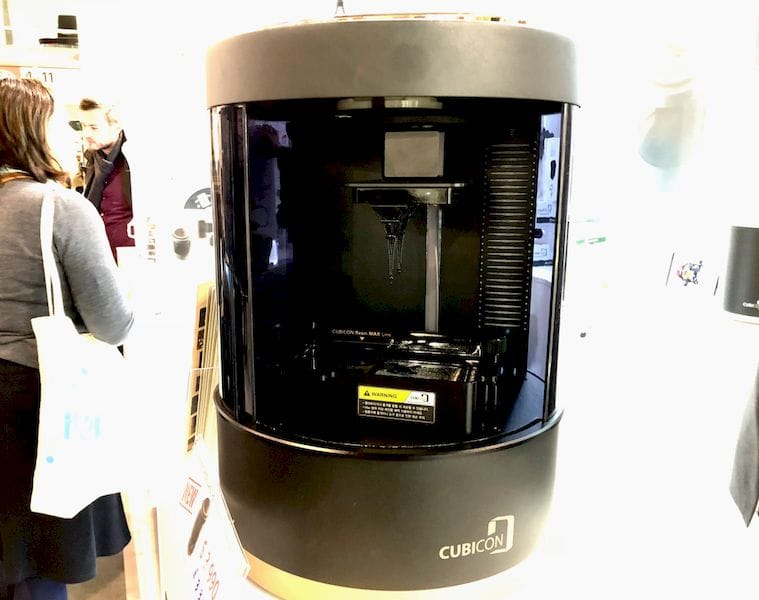
Cubicon’s new Lux desktop 3D printer is a bit of departure from their previous machines.
The Korea-based company has been producing very high quality desktop 3D printers for some years; we were very impressed when we first saw their initial machine at CES in 2015, as the machine included a number of uncommon features, at least at that time.
They’ve been quite successful ever since: They introduced several variations of their initial model, including a “mini” version and a more advanced model.
All of these machines employ the filament-extrusion process.
But their newest machine, the Lux, is entirely different. It uses the resin process, with a DLP projector as the light engine to solidify the liquid resin with its sharp UV rays.
There are plenty of resin 3D printers on the market, perhaps even too many. So how does the Lux distinguish itself among its many competitors? Like their previous equipment, the Lux includes some features you might not find on many other similar machines.
One is an intriguing leveling system. Wait, you say you don’t need leveling on a resin machine? Perhaps, as most resin machines do not include such a feature as the machine is “built level” at the factory. But they’re talking about an ability to dynamically adjust the spacing between the build plate/print and the bottom of the resin tank where the solidification occurs. This very subtle optimization should increase the quality of the prints.
Their resin tank includes three layers, not the two layers used by most other systems. This is the critical part of the entire system, where the laser fuses the liquid resin into a solid material. In most systems of this type, the solidified resin does adhere to the bed somewhat, causing the need for a lengthy “peel” process. However, they’ve installed a third layer called the “release film” that should speed up this process and make the resin tank last much longer. They claim it is good for “100,000 layers”. That’s a lot of printing!
One interesting aspect is that their DLP projector is full HD, meaning 1920 x 1080 pixels. While common in TVs, this is not so common in DLP 3D printers that tend to use projectors with smaller pixel counts. This directly affects the obtainable resolution, so I expect this device to produce extremely good quality prints.
A special zone process ensures that the light from the DLP projector is uniform in all 48 zones. This is important as larger prints that occupy more of the build chamber will require uniform solidification, and they seem to be providing this function.
It’s also possible to install a secondary resin bottle that will ensure the tank is not going to run out on a longer print. This is very important as resin is expensive and so is wasted print time.
Similar to their original desktop 3D printers, the Lux includes an activated carbon filter that should eliminate most of the odor created when using this resin device. If you’ve ever used a resin-based 3D printer, you’ll know of what I speak – they can be quite smelly. Here the Lux will avoid that problem.
The company has sold something close to 3,000 units so far, and of course would like to sell many more.
It’s not possible to buy this machine direct from Cubicon, as they seem to be content to sell through a variety of resellers in 24 countries. From them, you can pick one up for around USD$3,990.
If you’re looking for a high quality resin-based 3D printer, you should consider the Cubicon Lux.
Via Cubicon

